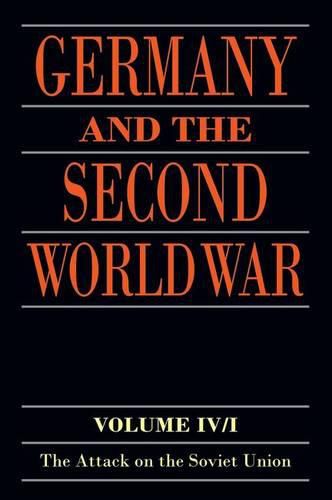Readings Newsletter
Become a Readings Member to make your shopping experience even easier.
Sign in or sign up for free!
You’re not far away from qualifying for FREE standard shipping within Australia
You’ve qualified for FREE standard shipping within Australia
The cart is loading…






Nine months after the beginning of the Second World War, German dominance over much of Europe seemed assured. Hitler not only stood on the pinnacle of his popularity in Germany but more than ever his ideological fixations and political calculations determined German war policy. This volume, the fourth in the acclaimed Germany and the Second World War series, examines the thinking behind the decision to go to war with the Soviet Union which was to prove the undoing of the German war effort. The authors examine in revealing detail the military and political policies behind the attack on the Soviet Union and the strategic conduct of the war. They explore not only the command principles and practices, but also the expenditure and attrition of the forces, and show that by the end of 1941 it was clear that it was in the eastern theatre that the Second World War would be decided and the map of Europe redrawn.
$9.00 standard shipping within Australia
FREE standard shipping within Australia for orders over $100.00
Express & International shipping calculated at checkout
Nine months after the beginning of the Second World War, German dominance over much of Europe seemed assured. Hitler not only stood on the pinnacle of his popularity in Germany but more than ever his ideological fixations and political calculations determined German war policy. This volume, the fourth in the acclaimed Germany and the Second World War series, examines the thinking behind the decision to go to war with the Soviet Union which was to prove the undoing of the German war effort. The authors examine in revealing detail the military and political policies behind the attack on the Soviet Union and the strategic conduct of the war. They explore not only the command principles and practices, but also the expenditure and attrition of the forces, and show that by the end of 1941 it was clear that it was in the eastern theatre that the Second World War would be decided and the map of Europe redrawn.